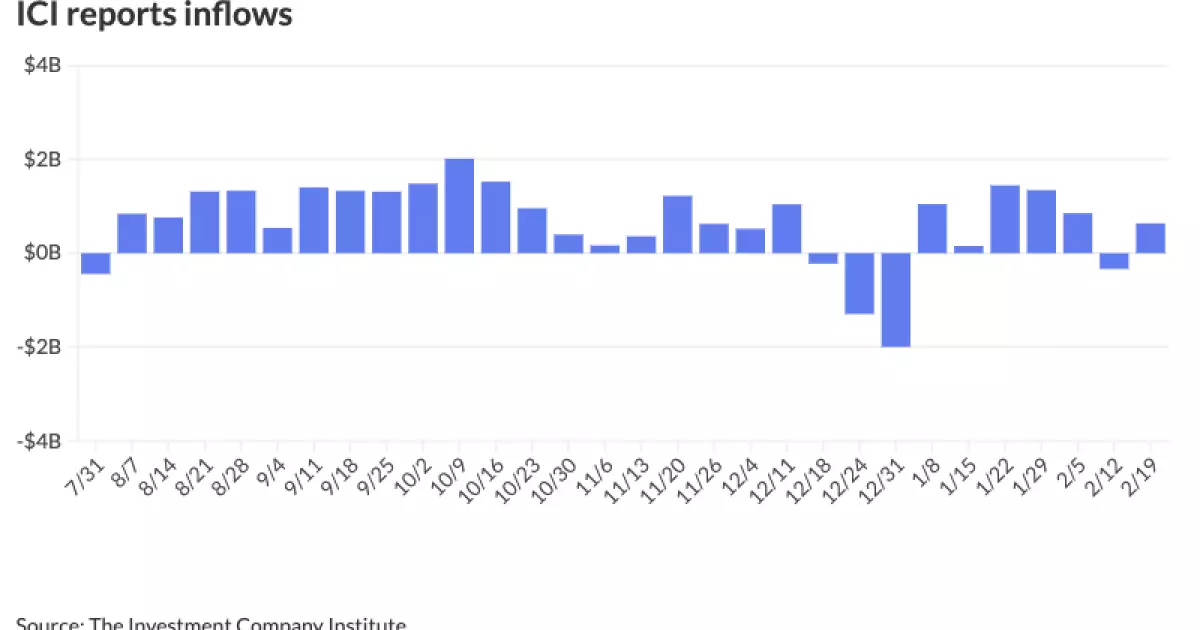The municipal bond market is currently undergoing interesting fluctuations, reflecting broader trends in the financial ecosystem. Recent developments have shown a slight firmness in municipal bond prices amid decreasing U.S. Treasury yields, which can indicate both investor sentiment and future potential in this sector.
On a recent Wednesday, municipal bonds exhibited resilience, benefiting from falling Treasury yields and mixed performance in equity markets. The ratios between municipal bonds and U.S. Treasuries varied, indicating investor demand and the economic conditions influencing these securities. The two-year municipal to U.S. Treasury ratio was measured at 63%, while the 30-year ratio reached 87%. This range reflects a market that is responding to both current interest rates and expected future movements, suggesting that investors are navigating a complex landscape of interest rate risks.
The Investment Company Institute reported significant inflows into municipal bond funds, recording $635 million for the week ending February 19, reversing a previous week’s outflow of $336 million. Exchange-traded funds (ETFs) also saw strong inflows, totaling $782 million, exhibiting a shift in investor confidence towards municipal bonds.
Analysts cite several factors driving the current issuance trends within the municipal bond space. A notable point raised by experts, including Jeff Devine from GW&K, is the upcoming potential changes in tax exemptions. Many issuers are rushing to capitalize on current tax benefits before any policy shifts might limit these advantages. The need for funding long-overdue infrastructure projects also remains a high priority, particularly as inflation exerts upward pressure on construction costs.
Recent mega-deals, like the South Carolina Public Service Authority’s $1 billion issuance, highlight how municipalities are adapting to market conditions. February has historically been a stable month for supply and demand dynamics, but expectations for March and April indicate a potential slowdown in coupon payments and maturities. Analysts are observing a seasonal pattern, which could reveal vulnerabilities in supply relative to demand as the spring season approaches.
On the policy front, discussions regarding the possible elimination of tax exemptions for municipal bonds are back in circulation. Jeff Timlin, a managing partner at Sage Advisory, emphasizes that removing these exemptions could inflate borrowing costs for municipalities, forcing them to seek alternative revenue streams. This could inadvertently lead to increases in state taxes and consumer expenditures, affecting overall economic health. Timlin’s assertion underlines the nuanced discussion surrounding tax reform and the “net benefit to society” that these exemptions afford.
While the prospect of complete elimination remains low, as noted by Devine, there is an elevated concern compared to past discussions. Historically, lawmakers have incrementally made changes rather than wholesale eliminations, as illustrated by the removal of advance refunding options in 2017.
Looking ahead, several notable issuances are on the horizon. The Black Belt Energy Gas District plans to raise $900 million through gas project revenue bonds. Other significant issuances include the Pennsylvania Turnpike Commission’s upcoming $602.81 million bond sale and the Massachusetts Development Finance Agency’s $100 million bond issuance for Boston University. Such offerings will give investors crucial insight into future municipal bond trends.
As these deals come to market, they could set expectations for credit quality and yield curves in the municipal space. Analysts are particularly interested in how these rates will be perceived in conjunction with the broader economic indicators influencing the municipal bond market.
The municipal bond market is at a pivotal moment, influenced by policy discussion, market dynamics, and the pressing need for infrastructure funding. Investors are advised to stay abreast of both macroeconomic conditions and the regulatory landscape. The interplay of these factors will not only shape current investment strategies but also influence the future of municipal finance in the United States. As we navigate these challenges, careful analysis and proactive adjustments will be vital to optimizing returns and managing risks in this evolving investment environment.

